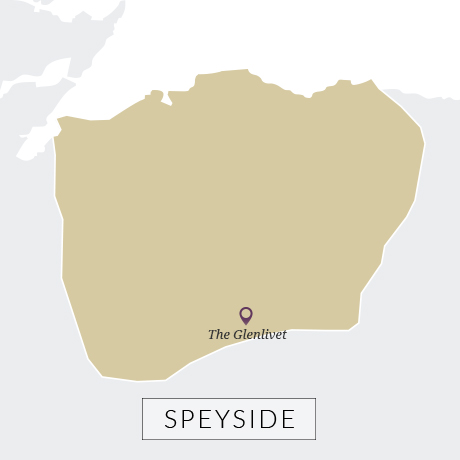Aberlour
Part of Chivas Brothers' portfolio, Aberlour is best known for its cult expression, A'Bunadh.


After a recent expansion and refurb it is one of the most modern distilleries in Speyside with a vast Brigg’s mash tun which sends clear wort to wooden washbacks. Distillation, which is slow, takes place in two stillhouses, in seven sets of stills.
George Smith’s greatest achievement wasn’t simply the taking out of a licence, but his decision to make a new style of whisky. By the 1860s, The Glenlivet was noted for producing a spirit with a ‘pineapple’ note, evidence that the floral, estery character seen today has a long history – and one which broke with the heavy, dense, rich styles prevalent at that time.

Although The Glenlivet is widely believed to be the oldest operational distillery in Scotland, it isn’t. That honour goes to Strathisla, while Glen Garioch could be even older. The Glenlivet was however one of the first to take out one of the new licences issued after the passing of the 1823 Excise Act which is accepted as being the starting point of the modern Scotch whisky industry.
George Smith was the man who did it. A farmer (which in those days in this region pretty much meant an illicit distiller), he had the ‘tack’ [rent] of the Upper Drumin farm in the southern part of Glen Livet. As it was his landlord, the Duke of Gordon, who had helped to push the Act through, there was little chance that Smith wouldn’t get a knock on the door from the Duke’s factors ‘persuading’ him to mend his ways.
Not that this was without danger. Whisky smuggling had been underway for almost 40 years by that time and the gangs were both well-established and relatively wealthy. Plenty of the new distilleries were razed to the ground. George Smith famously travelled with a pair of pistols in case he was attacked by his former colleagues.
His venture was a success and his Glenlivet whisky – conceivably made in a lighter style even at this stage – became popular. As the money came in, he took the tacks of Minmore and Nevie and with demand rising, built a second distillery at nearby Delnabo in 1850. His Edinburgh agent, Andrew Usher, then released ‘OVG’ [Old Vatted Glenlivet] initially as a vatted malt and then the first recognised blend. Smith’s Glenlivet was at the core of both.
Although the Drumin distillery burned down in 1858, and Delnabo (always suffering from water issues) closed the year after, Smith had started work on a new, larger plant at Minmore which opened in 1859 and still operates today.
‘Glenlivet’ had been used as a shorthand for what we now know as Speyside whiskies since the smuggling era. By the 1860s, the title was being appended to distilleries’ names as far north as Elgin, much to the irritation of the Smith family who had by then trademarked Glenlivet.
In 1881, George’s grandson, George Smith Grant, by then running the family firm, sued the companies who had added Glenlivet to their name. It took a further three years for a compromise resolution to be signed. This allowed the Smith’s distillery to call itself The Glenlivet, while the others could hyphenate their name with ‘-Glenlivet’. Over the years, 26 distilleries have styled themselves in this way although the practice now appears to have died out.
The Glenlivet was always available as single malt, but it wasn’t until after the Second World War that it began its rise. By then the firm was being run by Bill Smith Grant who saw the American market as offering new opportunities for the whisky, making it arguably the first single malt brand of the modern era. That said, even in the 1970s, 95% of its production was for fillings.
In 1952 it merged with Glen Grant, then that firm joined forces with blender Hill, Thompson & Co (owner of Queen Anne and Something Special) and the Longmorn/Benriach distilleries. In 1978, three years after Bill Smith Grant’s death, Seagram (owner of Chivas) paid £46 million for a controlling stake. Soon after, The Glenlivet became the largest selling single malt in America, a position it still holds today.
The mighty Seagram empire was divided up in 2001, with Pernod Ricard and Diageo dividing the spoils between them, with the former taking the Scotch division, renaming it Chivas Brothers. It was its new owner who, a decade later, unveiled a £10m investment which increased the distillery’s capacity by 75%. The aim is now to make The Glenlivet the world’s top selling single malt. Sales now top a million cases a year. When Bill Smith Grant started in the 1950s, it was less than 700 cases.
The distillery runs its own community, The Glenlivet Guardians. Membership includes access to a club room in the distillery and chances to assist in special bottlings.


 Distillery & brand
Distillery & brand
Part of Chivas Brothers' portfolio, Aberlour is best known for its cult expression, A'Bunadh.